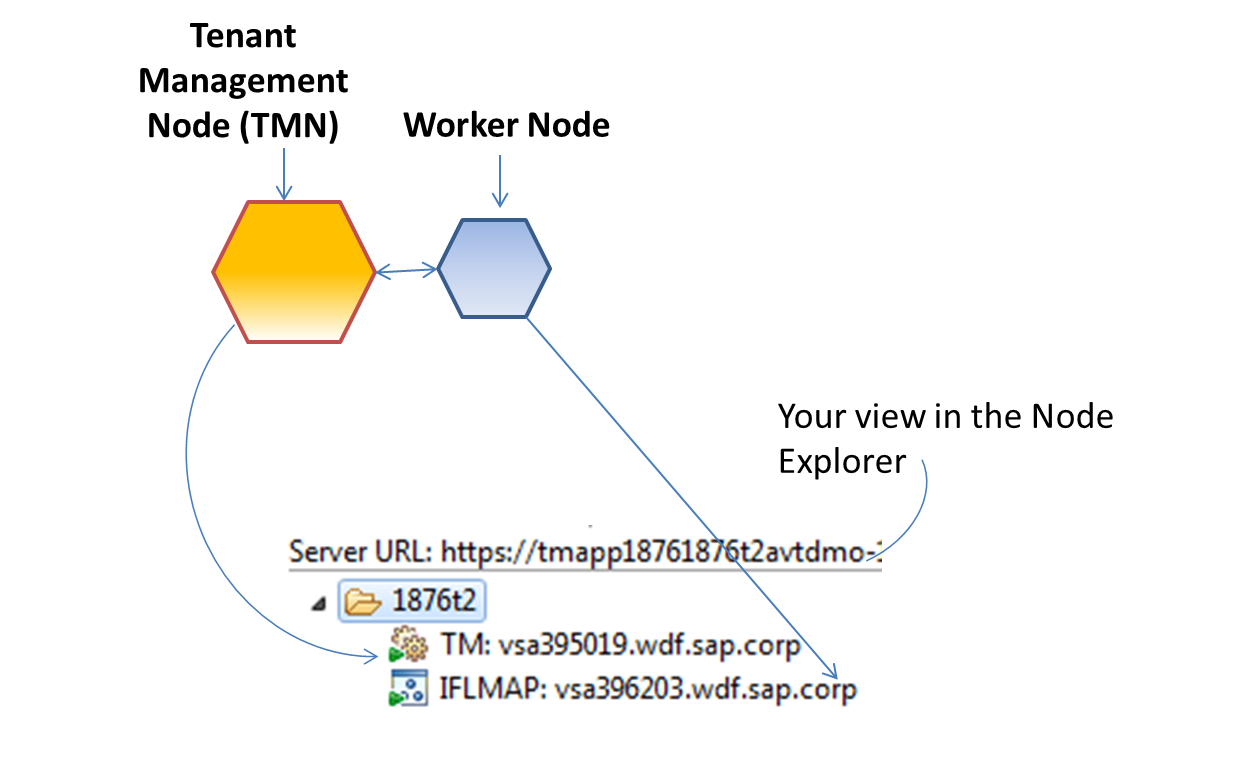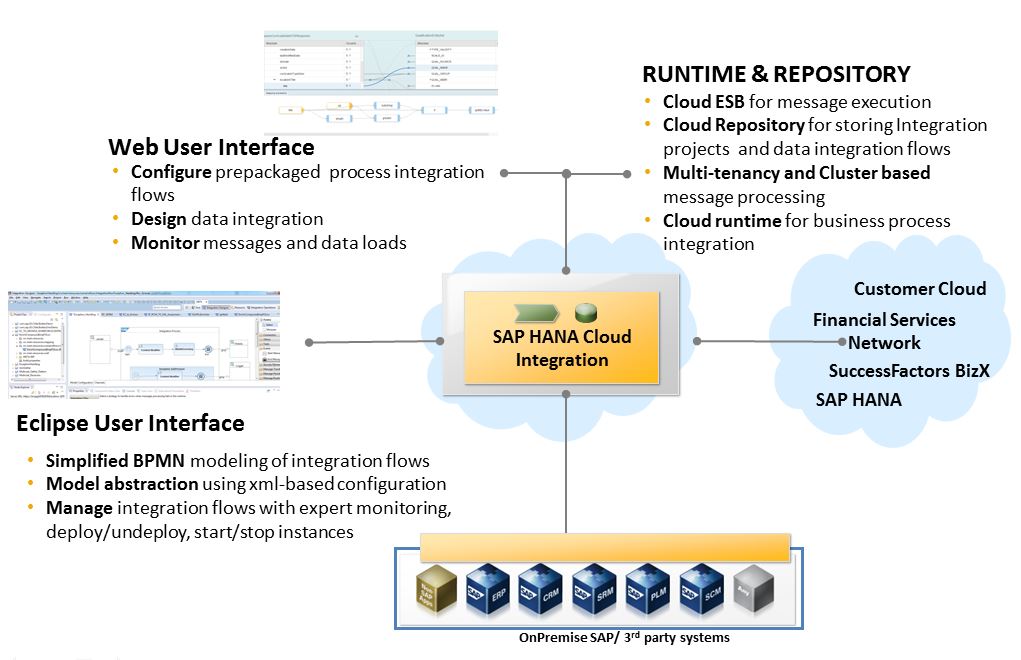
- SAP Community
- Products and Technology
- Technology
- Technology Blogs by SAP
- Landscape components of SAP Cloud Platform Integra...
Technology Blogs by SAP
Learn how to extend and personalize SAP applications. Follow the SAP technology blog for insights into SAP BTP, ABAP, SAP Analytics Cloud, SAP HANA, and more.
Turn on suggestions
Auto-suggest helps you quickly narrow down your search results by suggesting possible matches as you type.
Showing results for
sujit_hemachand
Participant
Options
- Subscribe to RSS Feed
- Mark as New
- Mark as Read
- Bookmark
- Subscribe
- Printer Friendly Page
- Report Inappropriate Content
01-13-2015
8:23 PM
Hello Colleagues !
In this blog, we shall look into the components of an SAP Cloud Platform Integration(f.k.a HCI) landscape. This blog is part of the architectural overview of SAP Cloud Platform Integration. You can find all the blogs over here.
SAP Cloud Platform Integration Nodes
At the core of SAP Cloud Platform Integration are integration nodes that run on the SAP Cloud Platform . Each node is a virtual machine instance. We have two types of nodes and each node performs a different function.
A worker node performs all the message processing while a tenant management node functions as a supervisor for the worker nodes. Tenant Management Nodes can bring up worker nodes, ensure it is up and running all the time, and keeps a repository of all your integration artifacts. You can picture the node architecture like the one below:

The simplified diagram maps to the following view that you shall see in the Node explorer:

SAP Cloud Platform Integration Components
All components that make up the SAP Cloud Platform Integration is given below -
- An Eclipse based tool-set allows integration developers to create and model integration flows. The Eclipse-based tool-set also provides integration administrators tools to administer and monitor the integration flows. (Integration flows are visual-based artifacts that an integration developer models)
- A Web-based IDE provides you the tool-set quickly configure and deploy integration flows.SAP Cloud Platform Integration comes with a host of pre-packaged integration flows that you can discover using the Web-based IDE. Discover the integration flows for your requirement, configure them for your requirements, and deploy them to the runtime.
- Integration Nodes that house a powerful, secure and scalable runtime - and a repository to store the cloud artifacts.

Best Regards,
Sujit
- SAP Managed Tags:
- Cloud Integration
18 Comments
You must be a registered user to add a comment. If you've already registered, sign in. Otherwise, register and sign in.
Labels in this area
-
ABAP CDS Views - CDC (Change Data Capture)
2 -
AI
1 -
Analyze Workload Data
1 -
BTP
1 -
Business and IT Integration
2 -
Business application stu
1 -
Business Technology Platform
1 -
Business Trends
1,658 -
Business Trends
91 -
CAP
1 -
cf
1 -
Cloud Foundry
1 -
Confluent
1 -
Customer COE Basics and Fundamentals
1 -
Customer COE Latest and Greatest
3 -
Customer Data Browser app
1 -
Data Analysis Tool
1 -
data migration
1 -
data transfer
1 -
Datasphere
2 -
Event Information
1,400 -
Event Information
66 -
Expert
1 -
Expert Insights
177 -
Expert Insights
296 -
General
1 -
Google cloud
1 -
Google Next'24
1 -
Kafka
1 -
Life at SAP
780 -
Life at SAP
13 -
Migrate your Data App
1 -
MTA
1 -
Network Performance Analysis
1 -
NodeJS
1 -
PDF
1 -
POC
1 -
Product Updates
4,577 -
Product Updates
342 -
Replication Flow
1 -
RisewithSAP
1 -
SAP BTP
1 -
SAP BTP Cloud Foundry
1 -
SAP Cloud ALM
1 -
SAP Cloud Application Programming Model
1 -
SAP Datasphere
2 -
SAP S4HANA Cloud
1 -
SAP S4HANA Migration Cockpit
1 -
Technology Updates
6,873 -
Technology Updates
420 -
Workload Fluctuations
1
Related Content
- Consuming SAP with SAP Build Apps - Mobile Apps for iOS and Android in Technology Blogs by SAP
- Demystifying the Common Super Domain for SAP Mobile Start in Technology Blogs by SAP
- Behind the compatibility - What are the compatibility means between GRC and the plugins in Technology Blogs by SAP
- SAP Signavio is the highest ranked Leader in the SPARK Matrix™ Digital Twin of an Organization (DTO) in Technology Blogs by SAP
- ABAP Cloud Developer Trial 2022 Available Now in Technology Blogs by SAP
Top kudoed authors
| User | Count |
|---|---|
| 36 | |
| 25 | |
| 17 | |
| 13 | |
| 8 | |
| 7 | |
| 7 | |
| 6 | |
| 6 | |
| 6 |